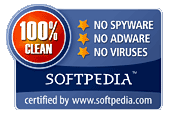I have an ASUS Zenbook UX305 which I just bought so I can have, a small, thin notebook which has long battery life,to supplement my larger gaming notebook. It came with 8.1 pre-installed. But I did a clean install of 10. The touchpad works during install while using official Windows USB media, but once I reboot to complete the initial setup it no longer works, and on the desktop as well. It puzzles me why such basic functionality is present during install but is missing afterwards, surely something this important should have carried over. I have an external Logitech trackball which works, and the screen is touch-enabled. The touchpad also doesn't work in Fedora or Arch Linux, I'm still looking for a solution there, knowing that a solution for Windows will be of no use.
I checked Windows Update and it offers alot, mostly drivers rather than updates for Windows. I don't recall a touchpad driver update being listed there, and I feel that MS cannot be trusted to correctly install drivers. I do have the drivers from ASUS support site though.
I'm wondering if it's possible to extract just the driver itself from ASUS's package, then slipstream the driver via a standard tool like Dism to the install.wim, so that touchpad functionality is immediately available.
Thanks!
















